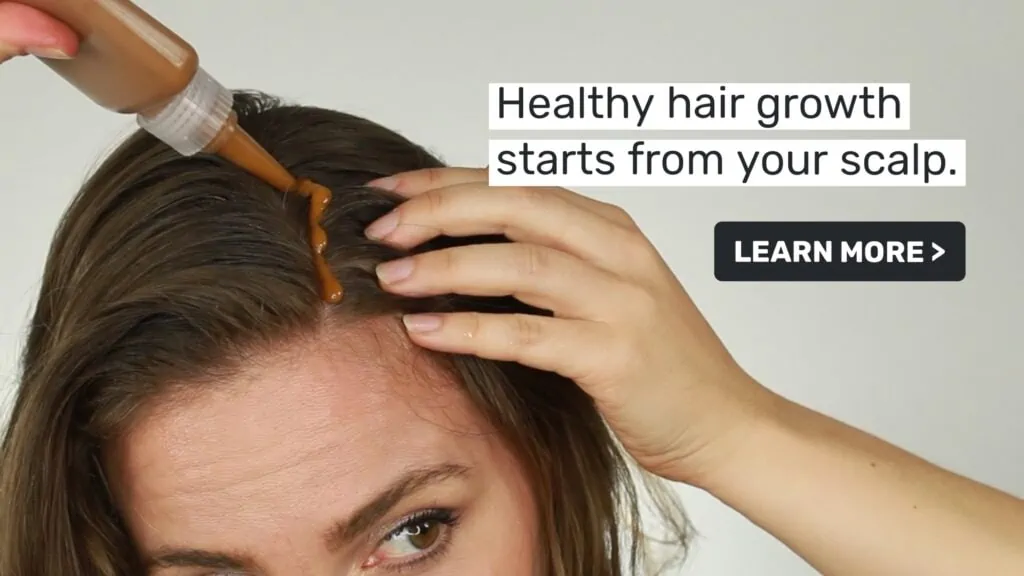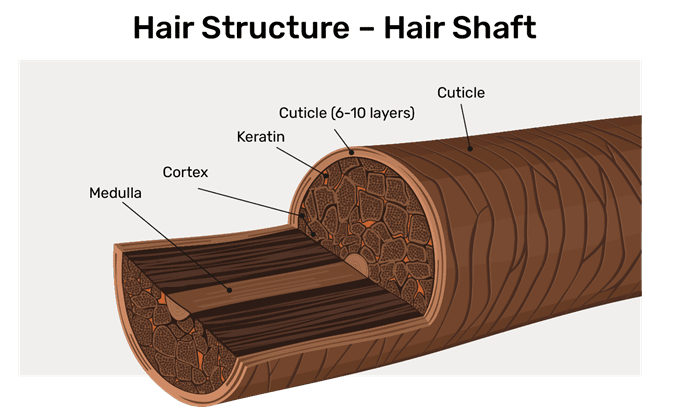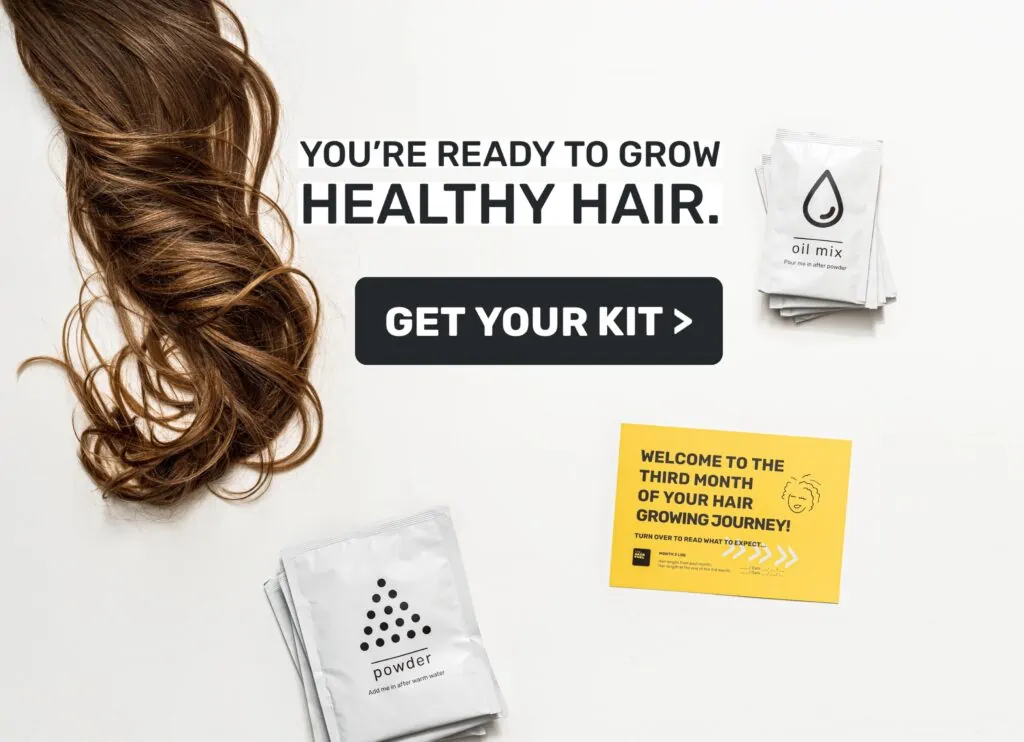SILICONES FOR HAIR CARE
Silicones have been used in personal care products since the 1950s. Initially limited to skin care products, the use of silicones has spread into hair care products and treatments. They are widely recognized for their lubricating properties and the characteristically soft smooth feel they help create in your hair. Are they safe to use? And why healthy hair community is seeing a backlash on silicones?
While silicones that made it to your product shelf are considered safe to use, not all silicones have been created equal. Depending on the type of silicone, there are long-term effects from usage, including build-up and hair brittleness.
Watch the video below to get an overview or continue reading the article:
Silicones are polymers, large molecules formed by chemically connecting a succession of building units together. Silicones originally come from things like sand and quartz, but then are tinkered with in a lab, so the end product is actually a synthetic ingredient. They’re similar to plastic in that they’re an extremely flexible material that can be molded into just about anything. This quality enables them to spread and create a very thin film on the surface of your hair that creates the “slip” and increases manageability.
If you have chemically-treated and/or curly hair you might find silicones working better for your hair than if you have untreated or “virgin” hair. Hair product manufacturers add silicones to shampoos, conditioners, and styling products to help create the slip needed to detangle your hair and give it a silky shine and manageability. Here are some types of silicones in hair products.
Non-water soluble silicones in hair care
These are silicones that you cannot remove or penetrate with water, which can inadvertently damage the hair. The damage happens when silicones “stick” to the hair surface creating a plastic-like film, which prevents strands from absorbing water, air and nutrients. Without regular usage of clarifying shampoo, hair becomes dry and brittle – which leads to damage, breakage and split ends. With a caveat, these types of silicones in hair products have an advantage when protecting hair against high heat styling, being a lot more efficient in this task than most natural oils.

Some non-soluble silicones in hair products include:
- Dimethicone
- Cyclomethicone
- Amodimethicone
- Pheryl Trimethicone
- Ceteraryl Methicone
- Dimethiconol
- Stearyl Dimethicone
- Ingredients ending with “-cone”
- Amodimethicone (non-soluble when Trideceth-12 and Cetrimonium Chloride are absent)
The problem with non-water soluble silicone hair products is the fact that they seal the hair shaft completely, allowing no moisture to penetrate the hair shaft until you wash out the silicone. If you do find yourself using products with non-soluble silicones or only just came about to learn about their negative effects, you can remove them by washing with clarifying shampoos otherwise known, as shampoos with harsher sulfates. However, these types of shampoos, although sometimes necessary, are drying to the strands. As an alternative to clarifying shampoos, you can use apple cider vinegar rinse to remove mild product build up. Heavier product build-up can only be removed with stronger surfactants, i.e. harsh sulfates.
Water Soluble Silicones
The beauty industry introduced water-soluble silicones to address the negative effects of non-soluble silicones while also keeping some of their benefits. The name gives it away – a water-soluble silicone can dissolve in water. It is a silicone that is easy to wash out of the hair using mild shampoos or conditioner-only techniques and does not leave a heavy buildup. For a time cyclomethicone was claimed to be water soluble, but its solubility is at the lower end of the solubility spectrum: 20mg/L. So if your conditioner/mask contains cyclomethicone, you would need to follow a clarifying routine to remove product buildup.
These silicones are easier to remove with gentler surfactants and they cause less of a product build-up in your hair.
Examples of water-soluble silicones are:
- Dimethicone Copolyol
- Lauryl Methicone Copolyol
- Any silicone with PEG as a prefix
Symptoms of silicone product build-up in hair
So how does silicone build-up look like and how do you know if you’re actually suffering from it? Below are telltale signs:
- Oily roots but dry hair lengths. The build-up will feel slippery and weigh down your hair. This means that the sebum produced by your scalp has an easier way to travel down the lengths of your hair – which will lead to greasier hair. However, because silicones wrap around your hair shaft, this will prevent moisture to actually penetrating your tresses, which leads to dryness of the lengths from within. (You might also find yourself washing your hair more frequently to get rid of the excess oiliness, but excessive shampooing will also lead to extra dry hair!)
- Long-term hair dulls over time. As more build-up is created, less sebum has access to coat the hair from within. Without the necessary amount of sebum on and in your strands, your natural hair shine will reduce and hair will look dull.
- Inability to hold its natural shape. As product accumulation increases, hair will be weighted down and look limp. This extra weight on your strands can make you lose the natural curl pattern of your hair.
- Breakage. As the hair dries out due to loss of moisture the hair shaft is weakened, and it becomes more susceptible to snapping and breaking. Think about it as bending a dry tree branch versus a fresh branch – the fresh one will bend more, but the dry branch will snap and break more easily.
- Scalp irritation. The accumulation and clogged pores on your scalp can lead to redness and/or itchiness.
- Flakiness. Excess sebum on the scalp can lead to fungi growth as the sebum and dead skin cells have nowhere to go with the layer of product build-up, causing your scalp to dry and flake.
- Hair loss and thinning. As accumulation continues to get worse on the scalp, the hair follicles almost become strangled to the point that the hair shaft is separated from the follicle and falls out. If leaving the pores unclogged, this can also prevent new hair growth.
How to remove silicones from your hair?
While not all silicones are “evil”, over time without an appropriate clarifying routine, it can lead to product build-up, breakage, and lifeless-looking strands. While there is some evidence that apple cider vinegar (ACV) rinse can help remove non-heavy product build-up from silicones, the best way to tackle it is to use gentle silicone-free clarifying shampoo. Use it only a few times a month – depending on the extent of your silicone-product usage.
Harsh surfactants you should avoid:
- sodium laureth, myreth, lauryl sulfate
- sodium coco sulfate
- ammonium lauryl and laureth sulfate
Some of the gentler cleansing surfactants that you can use to get rid of product build-up are:
- sodium cocyl isethionate
- cocamidopropyl betaine
- sodium lauryl sulfoacetate
- sodium lauryl glucose carboxylate
Silicones for hair growth and scalp health
Silicones in hair care products temporarily fill up the small crevasses and imperfections, which creates an appearance of smoother skin. The scalp is skin – so if non-soluble silicones get on your scalp, they will stay there. This can lead to clogging of your hair follicles and pores of your scalp, causing a dry, itchy, and flaky scalp. In addition, clogging of the hair follicles will prevent future hair growth and can lead to long-term hair loss and hair thinning. To prevent silicones from getting on your scalp, never apply conditioner on your scalp or roots and only apply it on the lengths of your hair. However even with this precaution, when styling, silicones from your mousse or hair spray might end up on your scalp. To help detoxify and cleanse your scalp, you can use clarifying shampoos, scalp scrubs, and scalp treatments.
Natural alternatives to silicones in hair products
To repair the damage resulting from silicone in hair and nourish the hair shaft, consider using suitable natural oils, instead of conditioners and masks that contain silicones. Even though silicones create a slip by smoothing out the cuticles – the outermost layer of your hair, they don’t help repair your hair at the level of cortex and medulla (hair’s inner core).

In lab studies, applying natural oils helped improve tensile strength (the extent to which your hair can stretch) – but applying silicones did not produce the same result. This evidences that natural oils penetrate the hair shaft deeper, keeping it nourished from within.
One of the best alternatives to silicones in hair care products, which performed better than silicones in improving the tensile strength of hair – is the oil of Brazil nut. It is also the closest oil to sebum – the natural oil your hair follicles produce to keep your hair moisturized and protected against external factors.
Want more customized advice for your hair? Take our quiz to find out which natural oil works best with your hair type.
Long-term approach without silicones in hair products
The bottom line is to eliminate, or at least minimize – products in your hair care that contain non-soluble silicones. While silicone-based are a widely available quick fix to protect your hair against heat damage, minimizing regular use of high heat styling altogether is the way to go anyway. For curly hair, following the Curly Girl Method, which leads you to slowly abandon harsh sulfates in shampoos, and heat styling and encourages you to embrace the bouncy nature of your curl is a useful, long-term approach.
If you want to step off the silicone ladder altogether, the first step is clarifying your hair from the product build-up using apple cider rinses and then substituting your silicone-based hair products with silicone-free alternatives. For heat protection, 100% shea butter – a natural oil known to lock in moisture and protect your hair against heat – performs almost on par with silicone-based products. Shea butter works for blow-drying that uses low to medium heat. If using a curling iron or hair-strengthener water-soluble silicones is still the most effective way to protect your hair without weighing it down.
If you do use non-soluble silicones in products, you would need to use a clarifying shampoo to remove the build up – which will dry your hair leading to long-term damage and breakage. Consider using heat-styling tools no more than once to twice a month if at all, and gradually train your hair to grow to its natural silky beauty.

On a final note, if you dye your hair but have to use a clarifying shampoo to remove product buildup, the sulfates in your clarifying shampoo will remove the pigment in the hair shaft, thus making the color fade faster. This means that you might have to visit a colourist more often and therefore subject your hair shaft to more damage that can lead to hair thinning and brittleness.
Want to learn more about the chemistry of your hair health and how to restore its natural beauty? Check out our article about the death of a hair follicle HERE >
Who we are:
The Hair Fuel is an all-natural hair growth mask created by Laura Sagen, who lost a third of her hair after a terrible visit to a hairdresser while suffering from a life-long condition of PCOS associated with androgenic hair thinning. She developed the formulation rooted in the science of scalp blood flow, which has become The Hair Fuel growth mask. Since then, her company has helped thousands of people like you to start growing healthy hair.
We work closely with our lab and manufacturers to ensure the highest quality product. But a product alone is never enough – so we hold your hand throughout your own, unique hair growth journey. Our flagship product, The Hair Fuel mask coupled with tailored advice, digital tools, and online support is there to help you grow the best hair you can. It’s a big claim – but we’re unafraid to make it. Check out our starter bundles >>
Sources:
- Safety Assessment of Dimethicone Crosspolymers as Used in Cosmetics (1)
- Silicones in Cosmetics (2)
- Rheological characterization of polysaccharide–surfactant matrices for cosmetic O/W emulsions (3)
- Emulsion stability of cosmetic creams based on water-in-oil high internal phase emulsions (4)
- Biology of hair care (5)
- Development and efficacy evaluation of hair care formulations containing vegetable oils and silicone, (6)
FAQ
-
1. Is silicone really bad for your hair?
Some silicones can cause product build up in your hair strands. This product build-up forms an almost plastic-like film around your strands thus suffocating them and preventing them from absorbing nutrients and moisture. This results in hair brittleness and breakage.
-
2. Are silicone products good for your hair?
Silicone products can create a visually pleasing effect on your hair and make your hair smooth to touch: but silicones don’t nurture and otherwise support your hair health. In fact that smoothness can mean that you’re covering your hair in effectively a plastic-like film which can suffocate your hair. Some silicones, especially non-water soluble ones, can worsen your hair health.
-
3. What silicones to avoid in hair products?
Avoid non-water soluble silicones in your hair products: Dimethicone, Cyclomethicone, Amodimethicone, Pheryl Trimethicone, Ceteraryl Methicone, Dimethiconol, Stearyl Dimethicone, Amodimethicone (non-soluble when Trideceth-12 and Cetrimonium Chloride are absent).
-
4. What are silicones in hair products called?
It depends on the silicones, but in your hair products look out for ingredients with the ending “-cone” in them which indicates a silicone. Most popular examples are Dimethicone, Cyclomethicone and Amodimethicone – those are also most harmful for your hair as they are not dissolved in water and cause product build up leading to hair brittleness and breakage.

The term is “nip it in the bud” not “butt”… nip it in the bud refers to plant growing… Like the budding of a flower or weed…. to keep a plant from growing, you “nip” or cut off the “bud” or the beginning of the plant growing… this stops the plant from growing.
So according to this article deep conditioners shouldn’t contain any silicones for them to be effective right?
Hey Lina – sorry for delay in getting back to you. Maybe it helps to take a step and think about what deep conditioning is for and how it’s done. Deep conditioning involves the application of a thick and restorative formula to your hair, using heat to encourage the penetration of the formula into your strands. It aims to repair dry, damaged hair by rebuilding the its molecular layer and replenishing moisture.
So – when it comes to restoration of molecular layers, Olaplex is the only product out there that temporarily restores the disulphide bonds in your strands. But unfortunately once the hair is damaged – the damage is permanent. Much like when you break your nail (which also consists of keratine).
Replenishing hair moisture can be done with natural oils: make sure you heat up your hair before application – to ensure the hair cuticles are opened up for maximum penetration and absorption!
Excellent article! I do have a question though… do silicones in shampoos and conditioners prevent water and other beneficial ingredients from absorbing or being effective? So many products contain silicones in the top half of the ingredients list and I wonder if the good stuff like glycerin, extracts, panthenol and absorbant oils are even able to do their jobs effectively. Thoughts?
The non-soluble types – yes. Water-solubles – less so. Also bear in mind that silicones would stay on your hair strands for a while, unless you followed by a clarifying shampoo – so even though you might have switched to a natural product, you might still need to clarify your hair from the residual silicones. And side note – things like heat-protectants and hair sprays often contain silicones – so those also need to be minded (and clarified), too.
Love this article! Very informative. However, I do have a question. “Cyclomethicone” is under both the non-soluble and water soluble sections. Could you clarify which it is? Thanks!
Hi Kelly! Yes, for some time cyclomethicone was considered as a water-soluble silicone, however its water solubility is at the lower end of moderate solubility range – 20mg / L. Low solubility starts from 10mg/L and below, and Moderate lies between 10mg-1000mg/L, High solubility is from 1000mg/L upwards.
do these silicones( non solluble ones) clog the pores of hair strands or the strand as a whole?
hey Zeina! Sorry it took us a while to get back to you – silicones clog the cuticles of hair strands, but research didn’t confirm that they clog the hair pores (good news!). Having said that, because silicones create a thin film on the scalp, it can trap bacteria, sebum, dead skin and other impurities which can lead to bad cases of acne on scalp. Something to bear in mind!
Beautiful article, very informative .
Thanks Shweta! Glad you found it helpful 🙂
I keep reading articles about looking for water soluble silicones such as dimethicone copolyol, Lauryl Methicone Copolyol, etc, but no article ever mentions any hair serums or glosses that use these silicones. I’ve searched everywhere for a water-soluble hair serum/gloss but I don’t think it exists…. Can you please name a few hair serums (finishing products for shine) that use ONLY water soluble silicones? Thanks!
Hey Dee – sorry for late response! Absolutely, silicones lurk around everywhere. Sounds like you’re already on the right track trying to find the silicone-free solutions! Your best bet might be healthfood shops (e.g. Holland & Barrett, Whole Foods and the like). These normally have a section for natural / organic cosmetics. The quality will differ, once you make a switch – so it’s the matter of trial & error. And also, it helps to think about long term changes you can do to add natural gloss to your hair strands: think hair oiling, supplements, reduction of heat styling – to name a few 🙂
This article was very helpful! I’m on my silicone-free journey as of now and I have come across something that concerns me. I’ve seen that sometimes natural oils will also build up like silicones and will need to be clarified with sulfates. Is this true? And if so, how can I prevent this or work my way around it?
Hi Larissa! Thanks for your question. Natural oil (sebum – which is oil produced by your own scalp) can be built up on scalp, yes – which is why you need to massage and wash your scalp properly with a shampoo. If you mean the natural oils that you add to your hair oiling routine – those are different from silicones, as the cell membranes of lipid molecules of natural oils are easily penetrated and dissolved by most shampoos (even the gentler types). It is not the case with silicones – which is why to remove silicone build up you need clarifying shampoos (those with harsher sulphates). Hope that helps? If you have more questions pop up an email to customer@thehairfuel.com